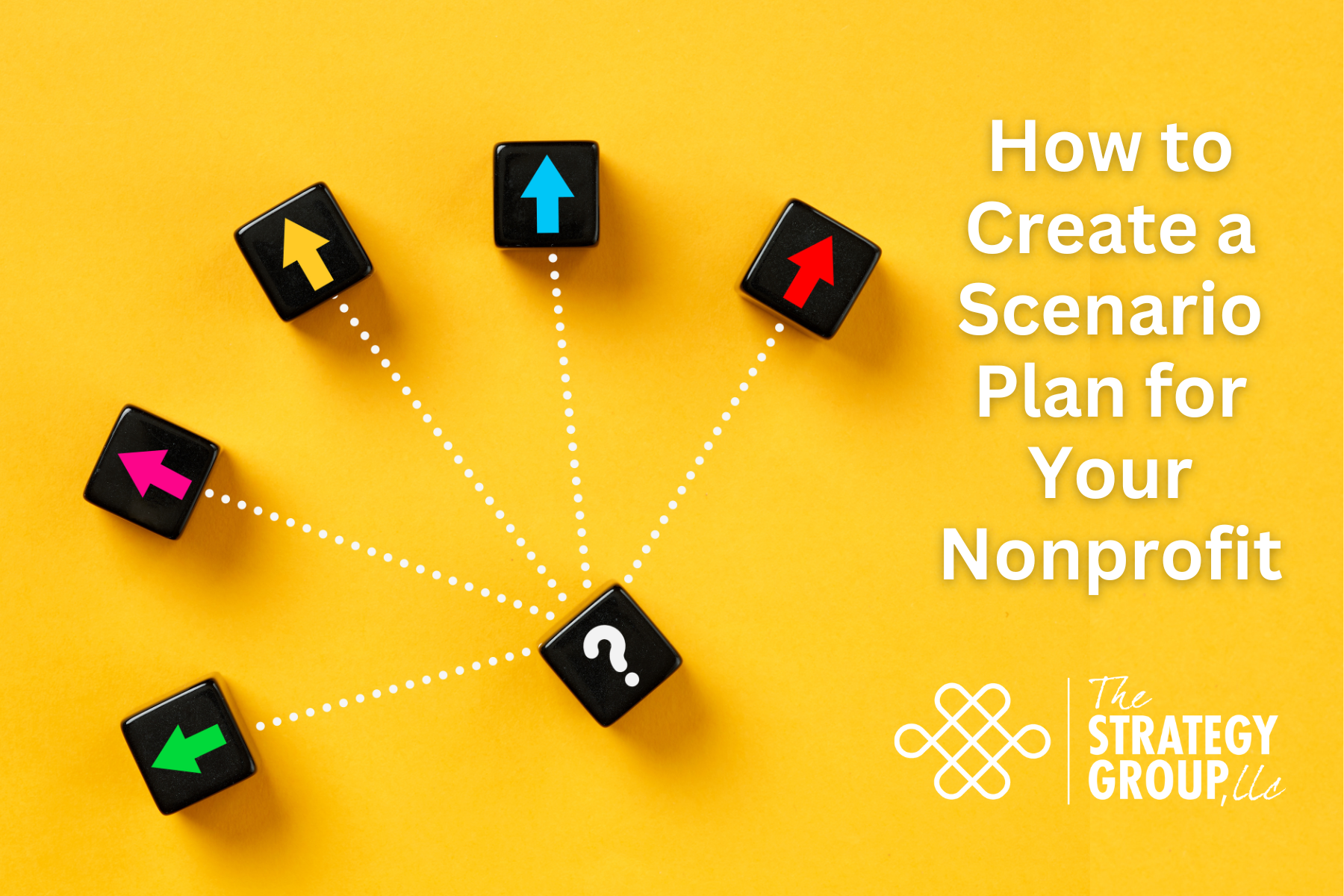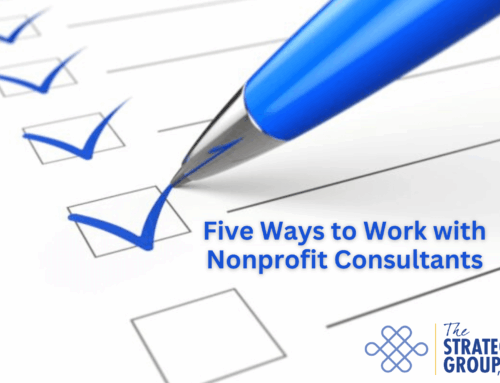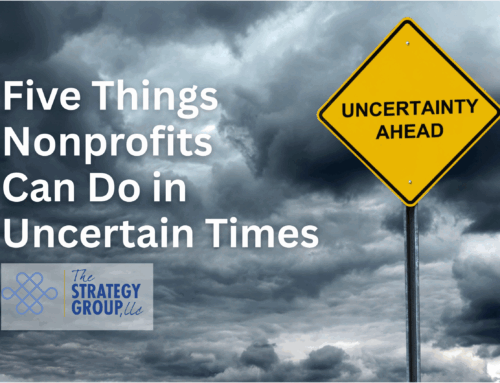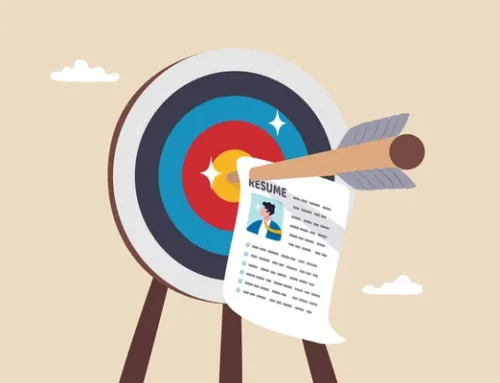These days, the only thing we can really count on is change. For nonprofits, that kind of uncertainty can be tough—but scenario planning is a great way to stay ahead of it. Instead of betting on one version of the future, it helps you think through a few different possibilities and come up with strategies for each. That way, your organization can respond quickly, reduce risks, and stay on track for growth—no matter what comes your way.
At The Strategy Group, we’ve spent years helping organizations navigate uncertainty through scenario planning. We’ve seen firsthand how powerful this approach can be in helping nonprofits think ahead, stay flexible, and make confident decisions—even in unpredictable times. To support your planning efforts, we’ve developed a webinar and a set of practical tools designed to guide you through the scenario planning process step by step. Whether you’re just getting started or looking to deepen your approach, these resources are here to help.
Here is our template on how to create a successful scenario plan:
- Define your purpose. Identify the issue you are trying to assess and address. Think about who needs to be involved, who needs to be informed, what processes will be used, and how far into the future you are trying to predict. This will provide a clear understanding of the goals and scope of the scenario plan.
- Identify assumptions that will be used as drivers for decisions. Ask yourself what are the major external factors likely to impact your scenarios. Identify the key internal drivers that you need to address. Consider what information you need, where you can get it from, and how you will go about this.
- Identify critical uncertainties (and certainties). We understand that uncertainty is, well, uncertain. However, breaking down and characterizing this uncertainty will provide a clearer picture of the future. What do you believe is highly uncertain about the future? What do you know you don’t know? What do you need to know that you don’t know now (beyond your intuition), and where can you get this information? Asking questions like these will make uncertainty more digestible. It is also important to consider what you believe to be true about your future and what you believe is certain.
- Develop two to three plausible scenarios. Consider the benefits and risks of each scenario. Think about how each aligns with your mission and values, and if they draw upon your organization’s strengths. With these scenarios in mind, how will you decide on a course of action? Limit your thinking to two or three scenarios. Do not fixate on only one scenario. Ensure all scenarios are relevant to the organization.
- Outline the implications. Looking through an equity framework, identify who benefits most and least. Be realistic: ask yourself if you have the right data, technology, bandwidth, and skills to develop and maintain scenario plans. Think about the short- and long-term impact on clients, staff, and community. Most importantly, does it help the organization prepare for the future? It is imperative to include multiple perspectives, financial considerations, and accurate data when weighing the implications of each scenario.
When creating a scenario plan, it is important to avoid biases (such as overconfidence, underprediction, or overprediction) and to consider best practices. Successful scenario planning assembles the right team, asks the right questions, gets the right data, keeps scenarios simple, is honest with financial models, and builds a nimble response.
Be sure to download our 5-step plan for scenario planning to get you started!
Scenario planning doesn’t predict the future—it prepares you for it. It encourages nonprofit leaders to think long-term, stress-test strategies, and build resilience. By imagining different paths forward, your organization will be ready for whatever comes next.
If you’re ready to explore how scenario planning can support your organization’s goals, we’d love to connect. Reach out to The Strategy Group to learn more about our tools, webinars, or to talk about how we can support your planning process. We’re here to help you prepare for whatever the future may bring.








